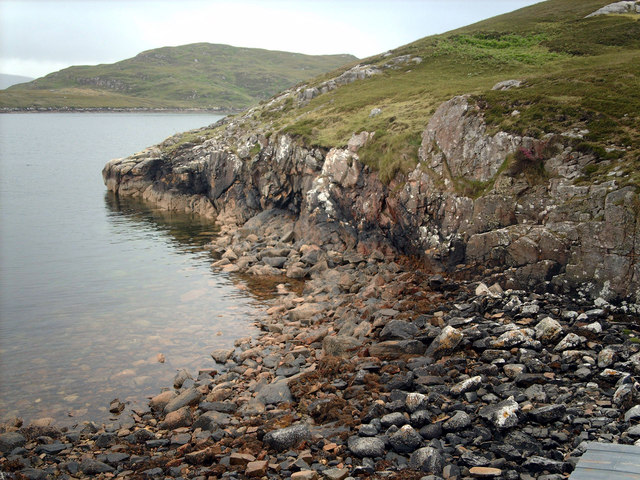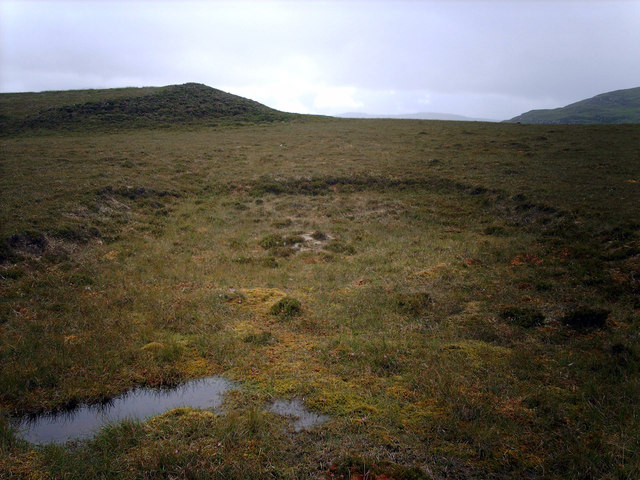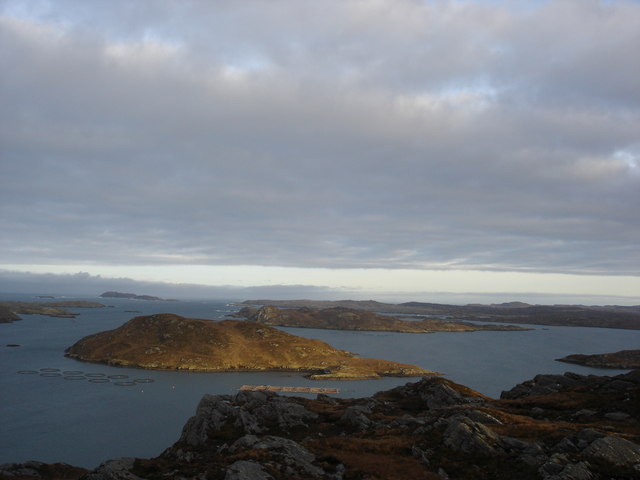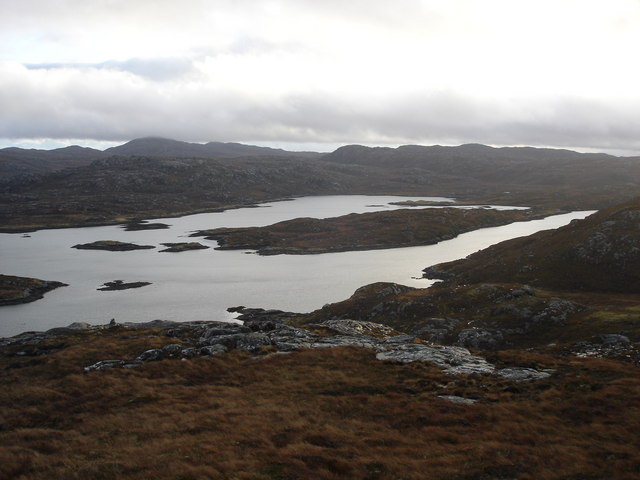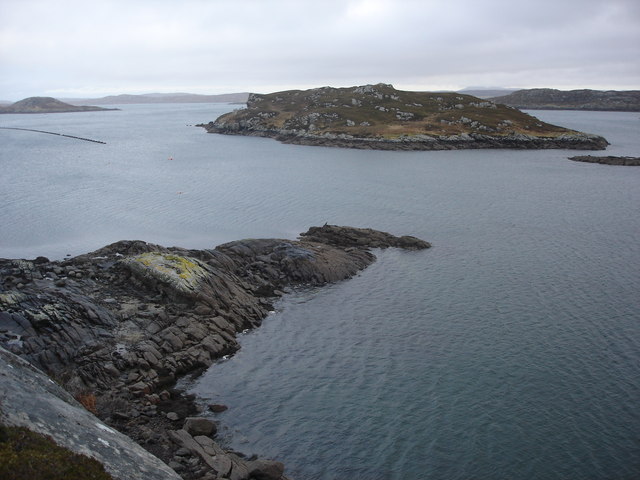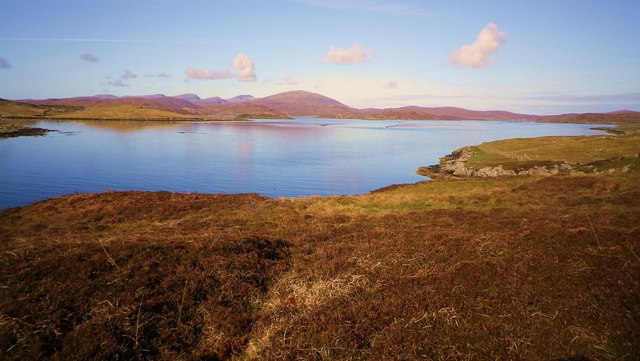Mullach Àird Drobhanais
Hill, Mountain in Ross-shire
Scotland
Mullach Àird Drobhanais
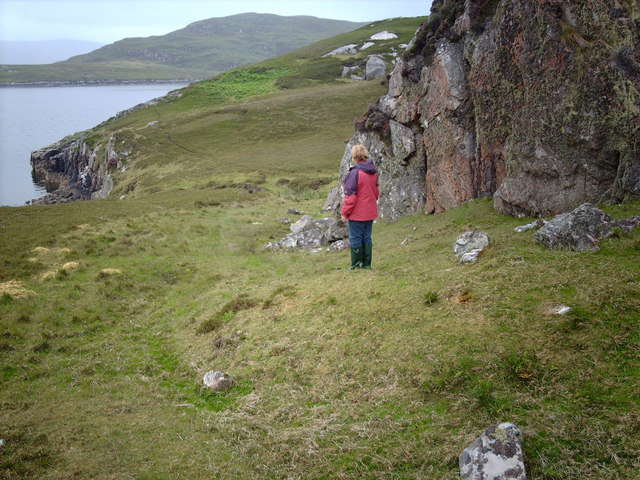
Mullach Àird Drobhanais is a prominent hill located in Ross-shire, Scotland. It lies within the Wester Ross area, known for its stunning natural beauty and rugged landscapes. Standing at an elevation of approximately 727 meters (2,385 feet), it offers breathtaking panoramic views of the surrounding Highland scenery.
The hill's name translates to "summit of the ridge of the black demon" in English, reflecting the mysterious and enchanting atmosphere it exudes. Mullach Àird Drobhanais is often considered a challenging climb, attracting experienced hikers and mountaineers seeking an exhilarating adventure.
The hill is characterized by its steep slopes, covered in heather and grasses, interspersed with rocky outcrops and scree. As climbers ascend, they are rewarded with ever-expanding vistas of the surrounding landscape, including nearby lochs, glens, and mountains. On a clear day, it is even possible to catch glimpses of the Isle of Skye and the Outer Hebrides in the distance.
Mullach Àird Drobhanais is a haven for nature enthusiasts, providing an opportunity to observe various species of birds, including golden eagles and ptarmigans, as well as other wildlife like red deer and mountain hares. The hill is also home to a diverse array of plant life, with heather, mosses, and lichens adorning its slopes.
Due to its remote location, proper planning and preparation are essential for those wishing to undertake the ascent of Mullach Àird Drobhanais. However, the stunning views and sense of accomplishment make it a must-visit destination for outdoor enthusiasts looking to immerse themselves in the rugged beauty of the Scottish Highlands.
If you have any feedback on the listing, please let us know in the comments section below.
Mullach Àird Drobhanais Images
Images are sourced within 2km of 58.190368/-6.8652773 or Grid Reference NB1432. Thanks to Geograph Open Source API. All images are credited.
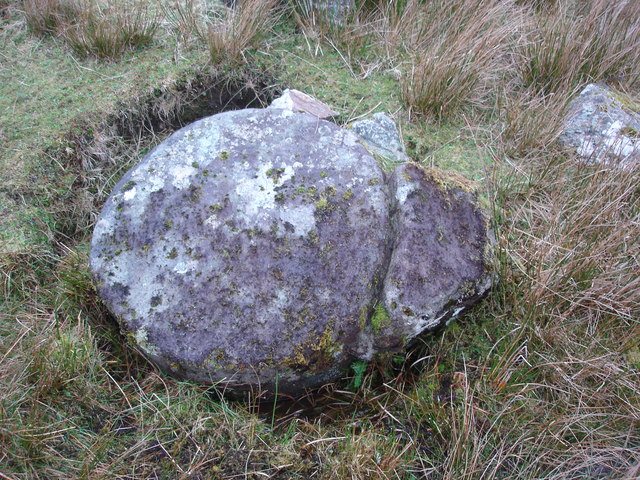
Mullach Àird Drobhanais is located at Grid Ref: NB1432 (Lat: 58.190368, Lng: -6.8652773)
Unitary Authority: Na h-Eileanan an Iar
Police Authority: Highlands and Islands
What 3 Words
///elect.large.drive. Near Carloway, Na h-Eileanan Siar
Related Wikis
Fuaigh Beag
Fuaigh Beag or Vuia Be(a)g is an island in the Outer Hebrides. It is off the west coast of Lewis near Great Bernera in Loch Roag. Its name means "little...
Loch Ròg
Loch Ròg or Loch Roag is a large sea loch on the west coast of Lewis, Outer Hebrides. It is broadly divided into East Loch Roag and West Loch Roag with...
Fuaigh Mòr
Fuaigh Mòr (sometimes anglicised as Vuia Mor) is an island in the Outer Hebrides of Scotland. It is off the west coast of Lewis near Great Bernera in...
Callanish VIII
The Callanish VIII stone setting is one of many megalithic structures around the better-known (and larger) Calanais I on the west coast of the Isle of...
Have you been to Mullach Àird Drobhanais?
Leave your review of Mullach Àird Drobhanais below (or comments, questions and feedback).
